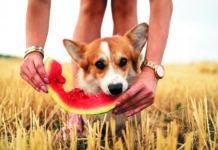Keeping Your Dog Engaged
Owners can take greater responsibilities in helping slow the aging process by noting early changes in their dogs’ appetites, behaviors and physical conditions. Veterinarians offer these recommendations:
Reinforce basic commands. You can teach an aging dog to “Sit” before heading out the door for a walk or “Give me a paw” shake before settling down his or her food bowl. Test hearing and sight by teaching your dog to make eye contact with you and then incorporate hand signal commands.
Play mental gymnastic games. Keep you dog mentally stimulated by playing a game of hide and seek with food treats stashed in different rooms of the house. Or serve your dog food puzzles, such as peanut butter-filled Kong toys or kibble-filled cubes.
Stick with short walks. Take your aging dog for shorter but more frequent walks on soft surfaces that won’t jar the joints. Vary the routes to expose your dog to new sights, sounds, and smells.
Encourage your dog to stretch. Prior to play time or walks, have your dog get into a “play bow” position—head down, front legs low and stretched forward, and back end up. This natural full-body stretch helps improve circulation and warm the muscles. After a walk or activity, gently stretch your dog’s legs and massage the torso.
Add more water bowls. As dogs age, they tend to drink less and run the risk of dehydration. Put a few more water bowls inside your home and measure the water in the morning and at night to make sure your dog drinks enough water. Wipe up spills so that your dog doesn’t slip and get injured.
Help your dog make the most of his or her golden years. Purchase Dog Care & Nutrition from Tufts Good Dog Library of Your Dog today.



